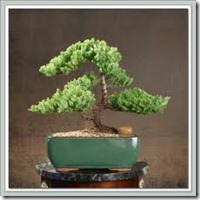 Not all tree diseases are caused by insects and arachnids. For instance, powdery mildew is a fungus infection that resides on the tops of leaves. Downy mildew is located on the undersides of leaves. When the tree’s leaves turn yellow but the veins remain green, the tree is a victim of chlorosis. Root rot can be detected when the branches fall off and the leaves are discolored (Lesniewick, 23).
Not all tree diseases are caused by insects and arachnids. For instance, powdery mildew is a fungus infection that resides on the tops of leaves. Downy mildew is located on the undersides of leaves. When the tree’s leaves turn yellow but the veins remain green, the tree is a victim of chlorosis. Root rot can be detected when the branches fall off and the leaves are discolored (Lesniewick, 23).
Water is a compound that all living things are dependent on. Bonsai trees must be watered but not quite like other houseplants because they require frequent watering. However, too much water is just as harmful as not enough. Do not try to compensate for the days you forgot to water by flooding your bonsai tree or it could suffer from root rot. Tap the side of the container to test to see how dry the soil is. If there is a hollow sound, your tree seriously needs its "thirst" quenched. If the soil is lighter than when it is moistened, then the plant needs a "drink" (Water). Water bonsai trees with small watering cans or plastic spray bottles. Leave the soil damp but make sure there is not a puddle of water that remains. If the water immediately runs through, repotting is needed because the tree has made use of all the minerals and nutrients. However, it is unhealthy if some water doesn’t eventually drain and there might be a complication in the root system (Lesniewick, 20).
Since bonsai is an art, it must promote self expression. Like any art, it has elements of style and design. These elements include symmetry, balance, and proportion (How do I create bonsai?) There are several primary shapes to select so that one is able to incorporate self expression. The main shapes are free form (also known as literi), slanting, semi or full cascade, group or forest, formal, informal, broom, windswept, multiple trunk and rock planting (Why are bonsai shaped differently?).
Although there are a variety of ways to shape a tree, there is a basic pruning technique that can be applied to all types of bonsai. For the first pruning, eye the tree, be the tree. If an artist cannot love their work and put emotion and a message into it, then their work will seem incomplete. It is important to take time while pruning. When trimming leaves, remember to always let a piece of the stem remain to encourage new growth. All wilted or dead shoots and foliage should be removed. Branches should be cleared from the lower third of the tree. Eliminate branches that grow downward. Branches shouldn’t protrude forward but instead should point to the sides and back of the tree. If two branches are located at the same height, one of them should be removed. Branches should not grow one on top of the other. Heavier branches can be taken off with concave bud-removing pliers. Small twigs can be snipped with pruning scissors. Cut shoots that grow too closely to other shoots or branches. Trees might not look the most attractive after a pruning session but if it is done correctly, a variety of new buds will arrive in a few weeks. Expert pruning keeps bonsai trees looking young and appealing (Pruning).
If a certain image cannot be achieved simply by pruning, training is imperative. Pruning and training a bonsai tree is significant for its development and image. Training a bonsai tree can actually raise or lower a branch, twist or bend a trunk, enlarge the circumferences of a trunk, and widen or shrink the distance between two branches. The materials needed for training are small rocks, string, wire, a wooden stick, wood wedges and a wire cutter.

Deprecated: strpos(): Passing null to parameter #1 ($haystack) of type string is deprecated in /home/agriviek8Qv/agriviet.net/public_html/wp-includes/comment-template.php on line 2522